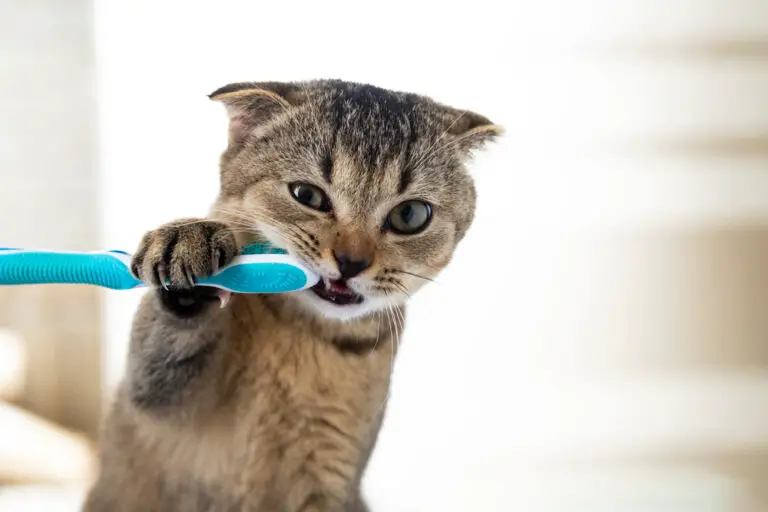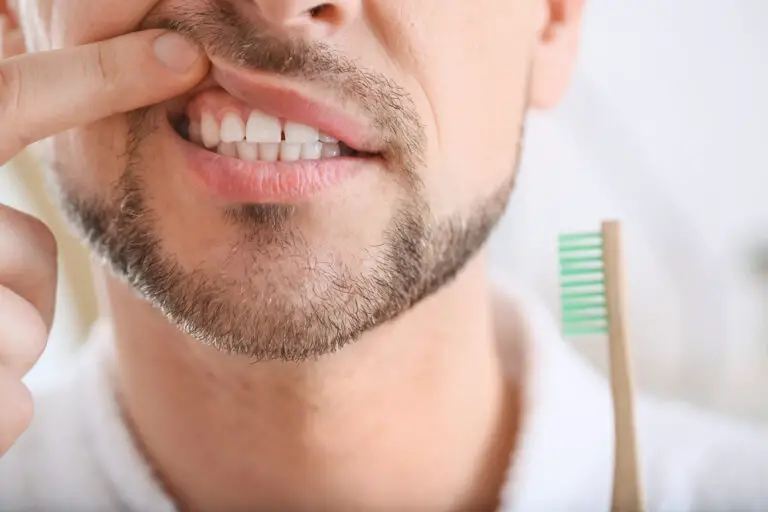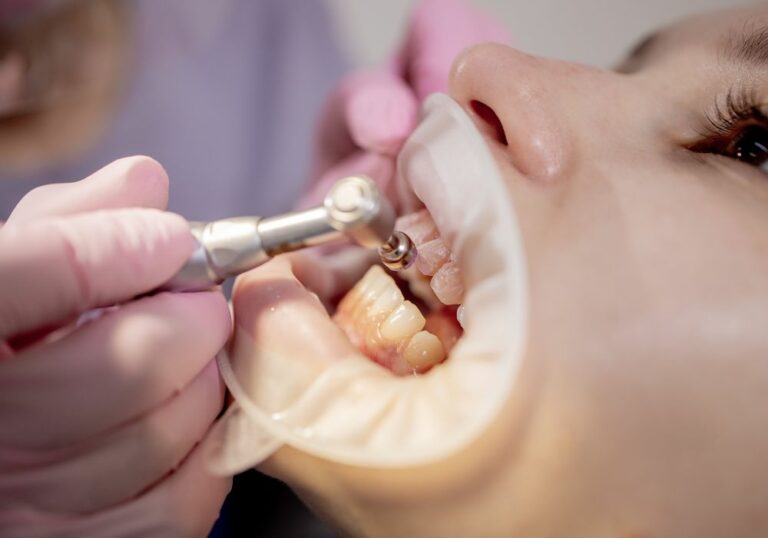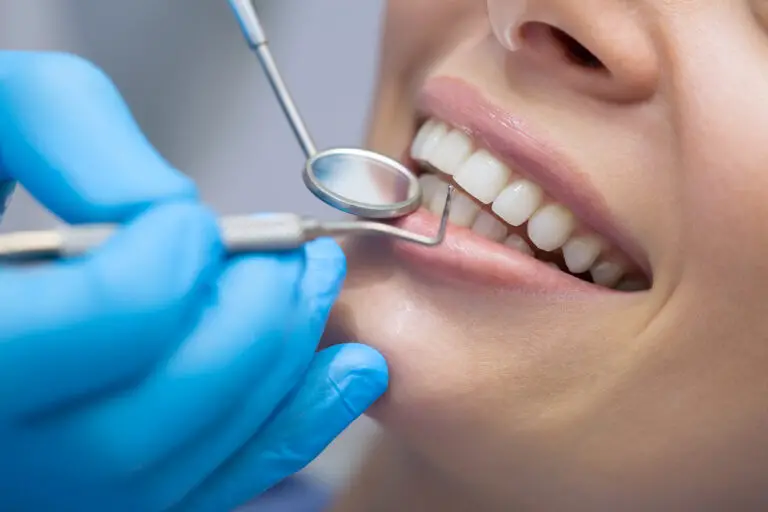After enduring months or years of orthodontic treatment with braces or Invisalign, the last thing you want is for your straight, beautifully aligned teeth to shift back out of position. This is why retainers are a crucial part of orthodontic treatment. Retainers help teeth stay in their new positions after braces come off.
But what happens if you skip wearing your retainer for a week? Can teeth start to shift that quickly? In this detailed article, we’ll look at how fast teeth can relapse without retainers, the factors that influence tooth movement, and tips to prevent relapse after orthodontic treatment.
How Soon Can Teeth Start Shifting Without Retention?
Unfortunately, teeth can start shifting out of place quickly once orthodontic appliances are removed. According to studies, tooth movement can occur in as little as a few days without retention. However, the amount of shifting in just one week’s time is typically subtle. There are several factors that determine how rapidly teeth will drift when retainers are not worn.
Age of the Patient
Younger orthodontic patients tend to experience faster rates of tooth movement. This is because teens and children have increased bone and cellular activity in their growing facial bones and jaws. The bones remodel at quicker rates in response to orthodontic forces. This also allows teeth to relapse more rapidly once retainers are discontinued. Adults over 25 tend to have slower bone and tooth movement.
Time Since Orthodontic Treatment
Research shows that teeth are most likely to shift within the first 6 months after orthodontic appliances are removed. During this initial period, the periodontal ligaments around the teeth are still rather loose and flexible. This enables teeth to move more readily. Beyond 6 to 12 months of retention, the ligaments become more rigid and stable, making teeth less prone to drifting.
Amount of Original Crooking and Crowding
Patients who had more severely crooked and crowded teeth before orthodontic treatment are at greater risk for relapse without retention. Their teeth had significant positional memory in the crowded state, and want to revert back toward this position when retention stops. Patients with only mild or moderate crowding before braces tend to be more stable.
Consistency of Retainer Wear
Several studies have found that inconsistent retainer wear and outright stopping of retainer use leads to the most dramatic shift in tooth positions. Patients who wore retainers infrequently or discontinued wear entirely soon saw teeth crowding and moving. Consistent retainer wear is key, especially in the first 6 to 12 months after appliances come off.
Based on these factors, most orthodontists recommend wearing retainers full-time initially for about 6 months at minimum. More high-risk cases may require a year or more of full-time wear. Nightly retention for years is often advised to prevent relapse. But just how much can teeth drift in say one week without wearing retainers?
Amount of Movement in 1 Week Without Retainers
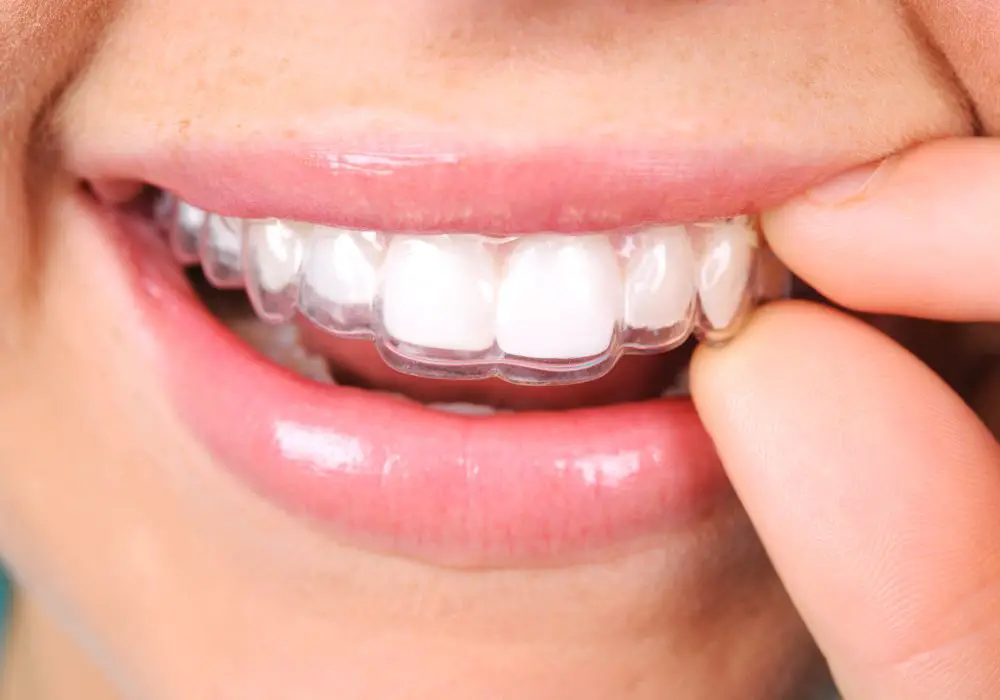 While teeth can start shifting soon after orthodontic force is removed, the amount of tooth movement occurring in just a week’s time without retention is usually minimal. According to studies, the average tooth movement after one week without retainer wear ranges from 0.1 to 0.5 millimeters. This is subtle drifting that may just start to open small gaps between the front teeth. Minor crowding or tooth rotations may occur.
While teeth can start shifting soon after orthodontic force is removed, the amount of tooth movement occurring in just a week’s time without retention is usually minimal. According to studies, the average tooth movement after one week without retainer wear ranges from 0.1 to 0.5 millimeters. This is subtle drifting that may just start to open small gaps between the front teeth. Minor crowding or tooth rotations may occur.
However, some patients are at higher risk for more dramatic relapse in a short period of time without retainers. This includes:
- Teens – Up to 1 mm of shifting may happen in just 1 week without retainers due to their accelerated bone turnover.
- Patients with moderate to severe original crowding – Their teeth want to drift back into crowded positions more quickly.
- Patients with unstable occlusion – Their bite may have a tendency to shift open without retainer wear, allowing faster tooth movement.
So while most patients see minimal movement in 1 week without retention, there are some exceptions where shifting can be more noticeable in a short timeframe.
Factors That Enable Tooth Movement Without Retainers
We’ve covered the factors that influence how rapidly teeth can shift without orthodontic retainers. But what are the biological mechanisms that cause this unwanted tooth movement? There are several underlying processes that drive teeth back toward their former crooked positions once appliances are removed:
Periodontal Ligament Elasticity
The periodontal ligaments surrounding each tooth root provide sensory input about forces on the teeth and allow teeth to move in the jawbone. After prolonged orthodontic forces, these ligaments become stretched out and elastic. In this state, they provide little resistance against tooth movement, enabling shifting and relapse. Over months of retention, the ligaments regain normal structure and function, making teeth more stable.
Bone Remodeling and Rebound
The entire time teeth are being repositioned with braces, the bone of the jaws is simultaneously adapting and remodeling. Orthodontic forces compress areas of bone in the direction of desired tooth movement, while stretching outer areas that then stimulate bone formation. This process gradually reshapes the bone to make space for teeth in new positions. Once braces are removed, the bone continues to remodel and wants to revert to its original shape and density. This creates opportunities for teeth to drift.
Eruption of Remaining Teeth
In adolescents and teens, newly erupting teeth continue to develop and emerge in the mouth even after braces are removed. The eruption pattern and forces from these incoming teeth can also influence the position of nearby straightened teeth. This is why teens especially need diligent retention during their growth period.
Soft Tissue Pressure
Even though appliances are removed, the tongue, cheeks and lips continue to apply light forces to the teeth. These soft tissues have gotten used to the previous crooked tooth positions and retained memory of this. Their pressure can guide teeth back toward these positions without retainers holding them in place. This reinforces the need for regular retainer wear as long as these soft tissue pressures exist.
Together, these ongoing natural biological factors create a potent environment for orthodontic relapse once appliances are removed. Consistent retainer use moderates these biological influences to maintain teeth in their new ideal positions.
How to Minimize Tooth Movement Without Retainers?
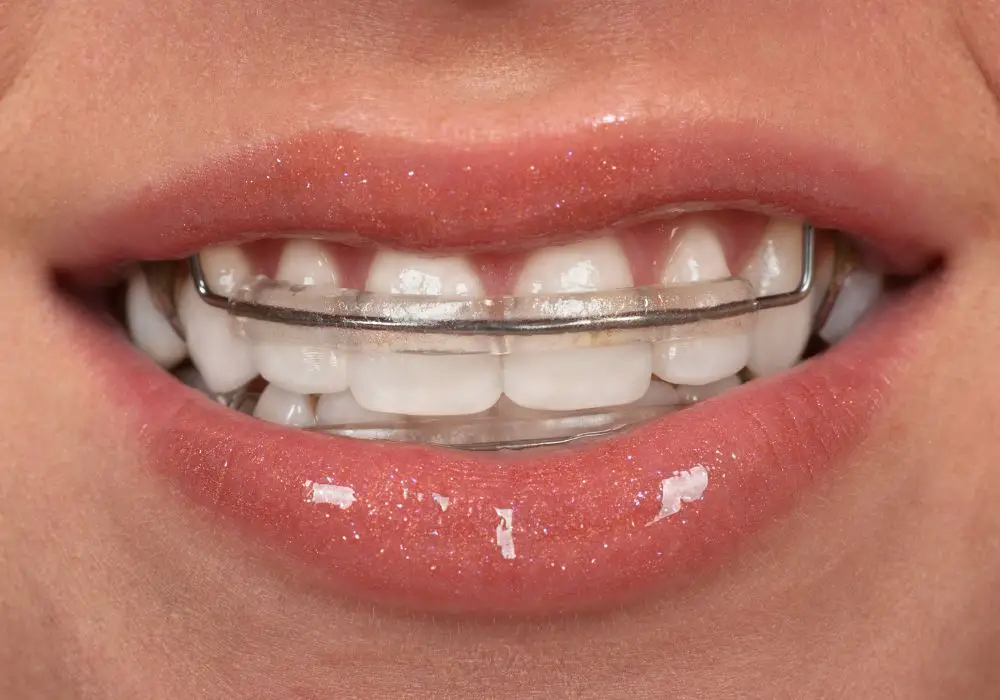
Preventing tooth shifting after orthodontic treatment requires a multi-pronged approach:
Retainer Wear Schedule
Follow your orthodontist’s recommended retainer wear schedule carefully, at least for the first 6 to 12 months. This means wearing retainers full-time except for eating and brushing for the initial period, then transitioning to nightly wear. Some patients, especially teens, benefit from part-time wear long-term.
Promptly Resume Wear If Shifting Occurs
If you notice subtle tooth shifts, promptly resume wearing retainers full-time. Attempt to reseat teeth in their prior positions with consistent retainer use. See your orthodontist soon to evaluate if new retainers or adjustments are needed.
Request Backup Retainers
Ask your orthodontist for an extra set of retainers in case your retainers are lost, broken or misplaced. Having backups available gets teeth back in retention ASAP if an issue arises.
Protect Retainers During Sports & Activities
Remove retainers as needed for contact sports, playing musical instruments and other activities that could displace or damage them. But replace them soon after finishing the activity to maximize wear.
Maintain Excellent Oral Hygiene
Brush and floss thoroughly before inserting retainers. Leave retainers out while eating sugary or acidic foods that could interact with them. Clean retainers regularly with cool water and cleaning solutions.
Consider Fixed Retainers Behind Front Teeth
Fixed lingual wires work 24/7 to retain front teeth in place. These may be a good choice for teens and high-risk cases needing extra retention security.
With diligent at-home care and professional follow-up, you can enjoy the lasting results of your orthodontic investment and smile transformation.
Can You Wear an Old Retainer if Teeth Have Shifted?
You took your retainers out one night and weeks slipped by without wearing them. Now your teeth have noticeably shifted. Can you just pop in your old retainers again like nothing happened? Will this bring your teeth back? Unfortunately, putting in an old retainer that no longer fits is not the right approach. Here’s why:
- Old retainers will likely not fit properly on shifted teeth. They may apply unwanted force on teeth in their new positions.
- Attempting to force an ill-fitting retainer onto teeth can damage the teeth, retainer, and supporting gums.
- The old retainer will be ineffective at retaining teeth in their current state of misalignment.
Instead, be proactive with these steps:
- Make an appointment with your orthodontist to evaluate your tooth shifting. They will advise if new impressions and retainers are needed.
- For minor drift, your orthodontist may recommend resuming full-time wear of the previous retainers for 1-2 weeks to nudge teeth back.
- If teeth have relapsed significantly, braces, aligners or other treatment may be required to fully realign them.
- Do not continue wearing old retainers that are clearly not fitting properly on your current teeth.
While an old retainer won’t work for shifted teeth, see your orthodontist right away. Getting back into orthodontic retention ASAP gives you the best chance of correcting minor tooth movement before it worsens. Be sure to discuss any habits or factors that led to you stopping retainer wear so they can be addressed.
Different Retainer Options After Braces
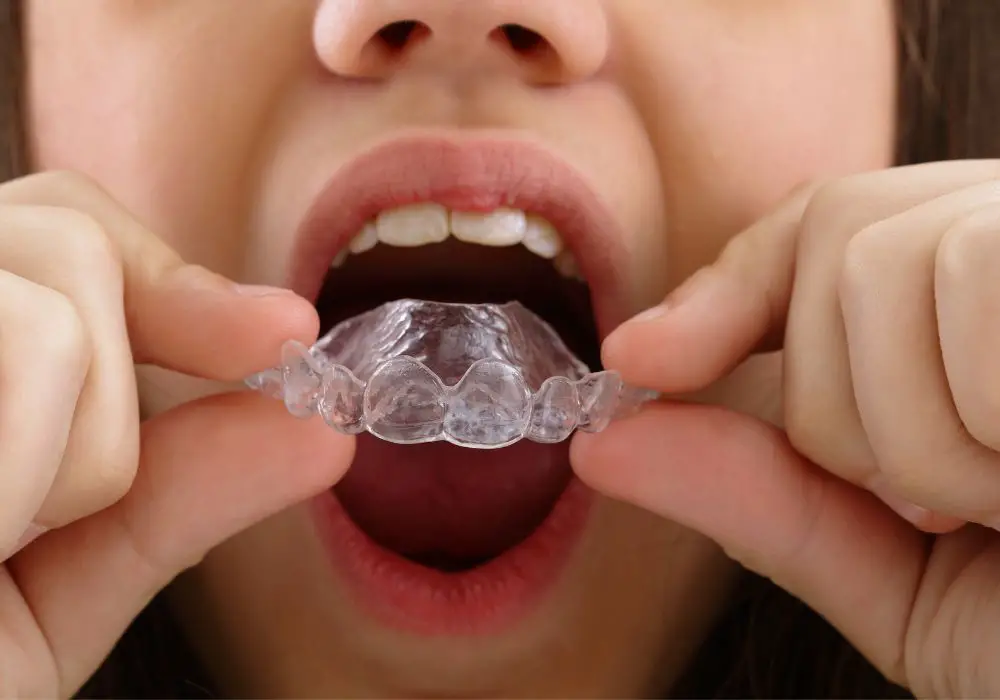
Orthodontists have several retainer options to stabilize teeth after active orthodontic treatment. The most common choices include:
Hawley Retainers
Hawley retainers consist of a metal wire frame with an acrylic portion that covers the palate and teeth. Patients can remove these for eating and brushing their teeth. They are a common choice to retain both upper and lower arches after braces.
Pros:
- Allow dental hygiene access
- Can discontinue full-time wear gradually
Cons:
- May feel bulky in the mouth
- Removable, so dependent on compliance
- Can break over time
Clear Plastic Retainers
Made from transparent plastic, these removable retainers offer a more discrete look. They may cover all upper and/or lower teeth or just the 6 front teeth. Patients remove them for meals and oral care.
Pros:
- More comfortable and esthetic than Hawley retainers
- Enable dental hygiene access
- Gradual weaning from full-time wear
Cons:
- Still removable and compliance-based
- Can be damaged over time
- May not be as durable long-term
Fixed Lingual Retainers
Bonded to the tongue-side of the 6 lower front teeth, these consist of a thin wire attached to each tooth. They offer invisible continuous retention of the front teeth after braces.
Pros:
- Comfortable since placed lingually
- No reliance on patient compliance
- Prevents relapse of front teeth
- Maintains tooth contacts
Cons:
- Can make flossing more difficult
- May need repair if wire breaks
- Does not retain back teeth
Discuss the advantages and disadvantages of each retainer option with your orthodontist. They can help select the best choice based on your treatment, age, risk factors, and lifestyle needs. Consistent long-term retention is critical for maintaining your orthodontic investment.
Frequently Asked Questions
How long should I wear retainers full-time after braces?
Expect to wear retainers full-time for at least the first 6 months after braces are removed. Some orthodontists recommend up to a year or more of full-time wear, especially for teens. This allows enough time for bone and periodontal ligaments to stabilize around teeth.
Can teeth still shift with retainers on?
Properly fitted retainers worn as directed should prevent tooth shifting. However, ill-fitting retainers, inconsistent wear, or habits like teeth grinding can allow gradual tooth movements over time. Notify your orthodontist of any changes.
How often do you have to wear retainers at night?
After full-time wear, most patients transition to wearing retainers nightly while sleeping. The exact schedule will vary based on your specific case and risk factors. Your orthodontist will advise the retention regimen best suited to maintaining your results.
Can an old retainer be resized instead of getting a new one?
Trying to resize an old retainer to fit shifted teeth is difficult and unlikely to work well. For proper fit and realignment, your orthodontist will take new impressions and fabricate custom retainers matched to your current tooth positioning.
How should you clean retainers?
Use a soft bristle toothbrush and cool water to gently brush retainers. Soak them periodically in denture cleaner or diluted bleach solution. Avoid hot water and harsh cleaners that could warp or degrade plastic retainers over time. Always brush your natural teeth before inserting retainers.
Conclusion
While teeth can start shifting soon after braces or aligners are removed, the amount of movement in the first week is minimal for most patients. Teens and those with previous crowding are at highest risk for rapid relapse without diligent retainer wear. Be vigilant about wearing your retainers exactly as directed, especially for the first 6 to 12 months. If minor tooth drift occurs, resume retainer use ASAP and see your orthodontist promptly. With consistent retention and follow-up care, you can protect your beautiful orthodontic results and investment.


